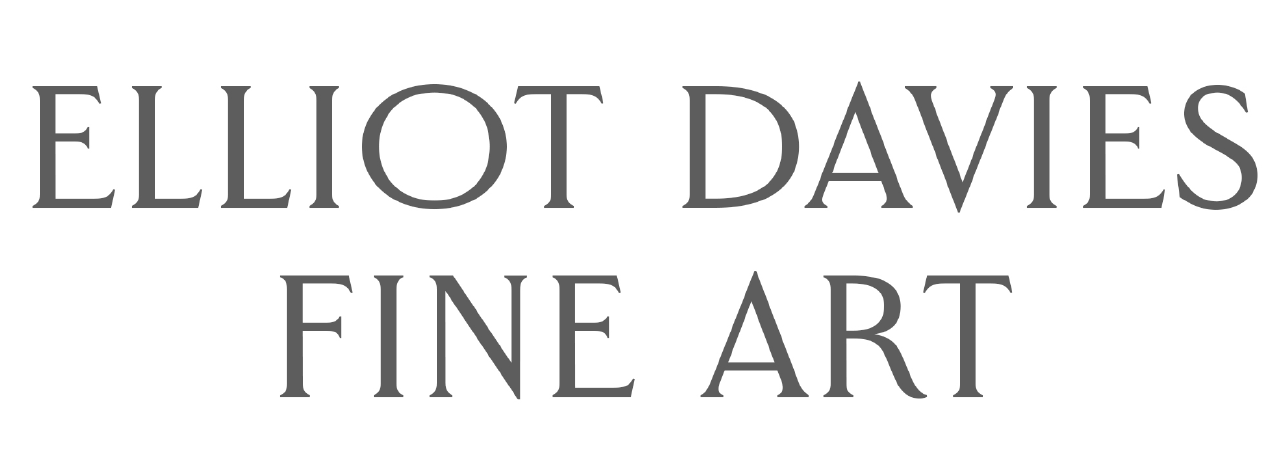The HEARST CUP
Attic, Greece, circa 5th Century B.C.
Black-Figure, Banded Cup (Kylix)
27.5 cm wide
Inscription between palmettes:
“CAIREKAIPIEIEY” (CHAIREKAIPIEIEY)
Translation:
“Rejoice and Drink”
Provenance:
William Randolph Hearst (1863 - 1951)
Donna Jacobs Gallery, Birmingham, Michigan
Private collection, Michigan, USA (acquired from the above on 5th August 1986)
£18, 650

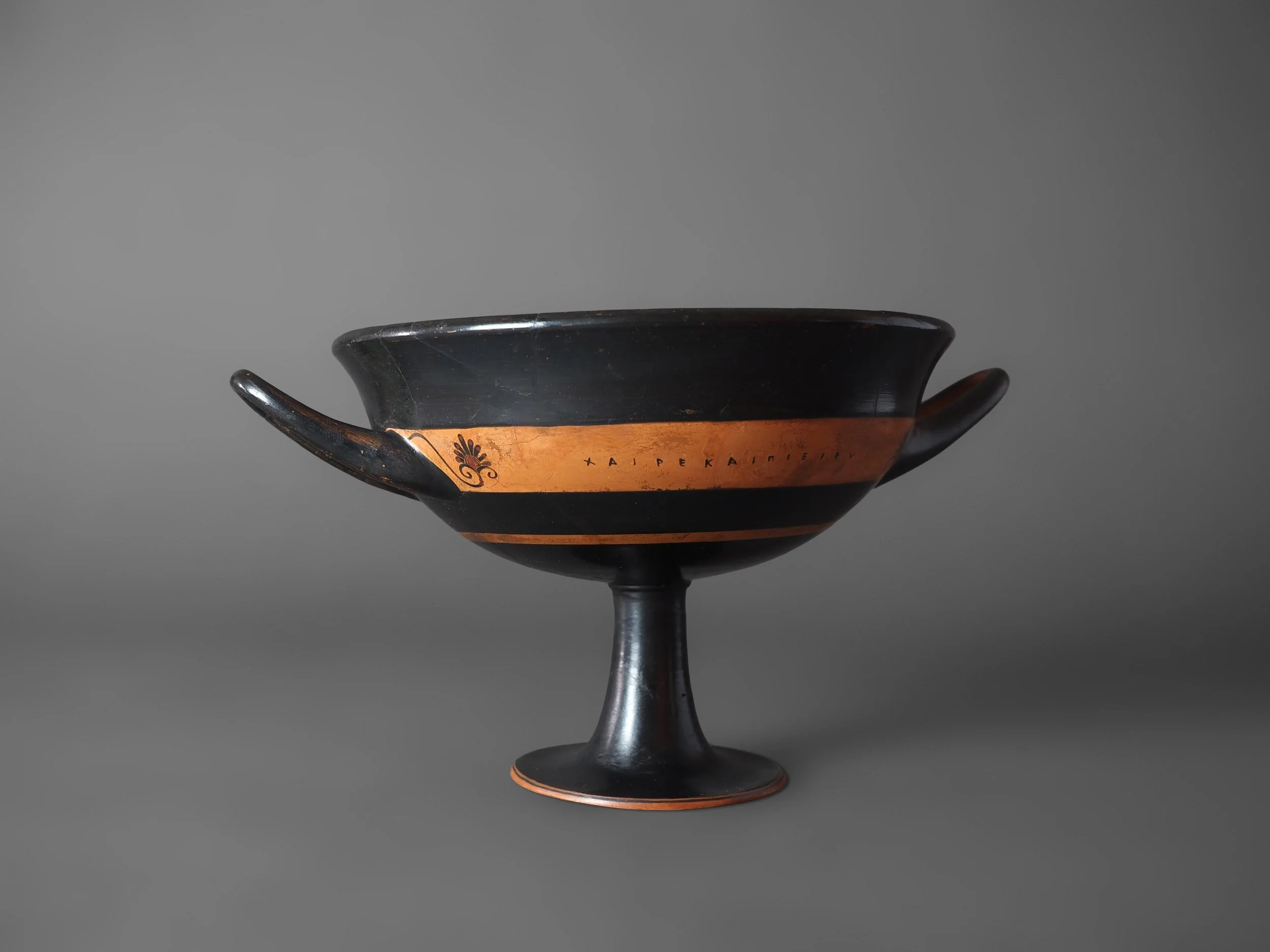
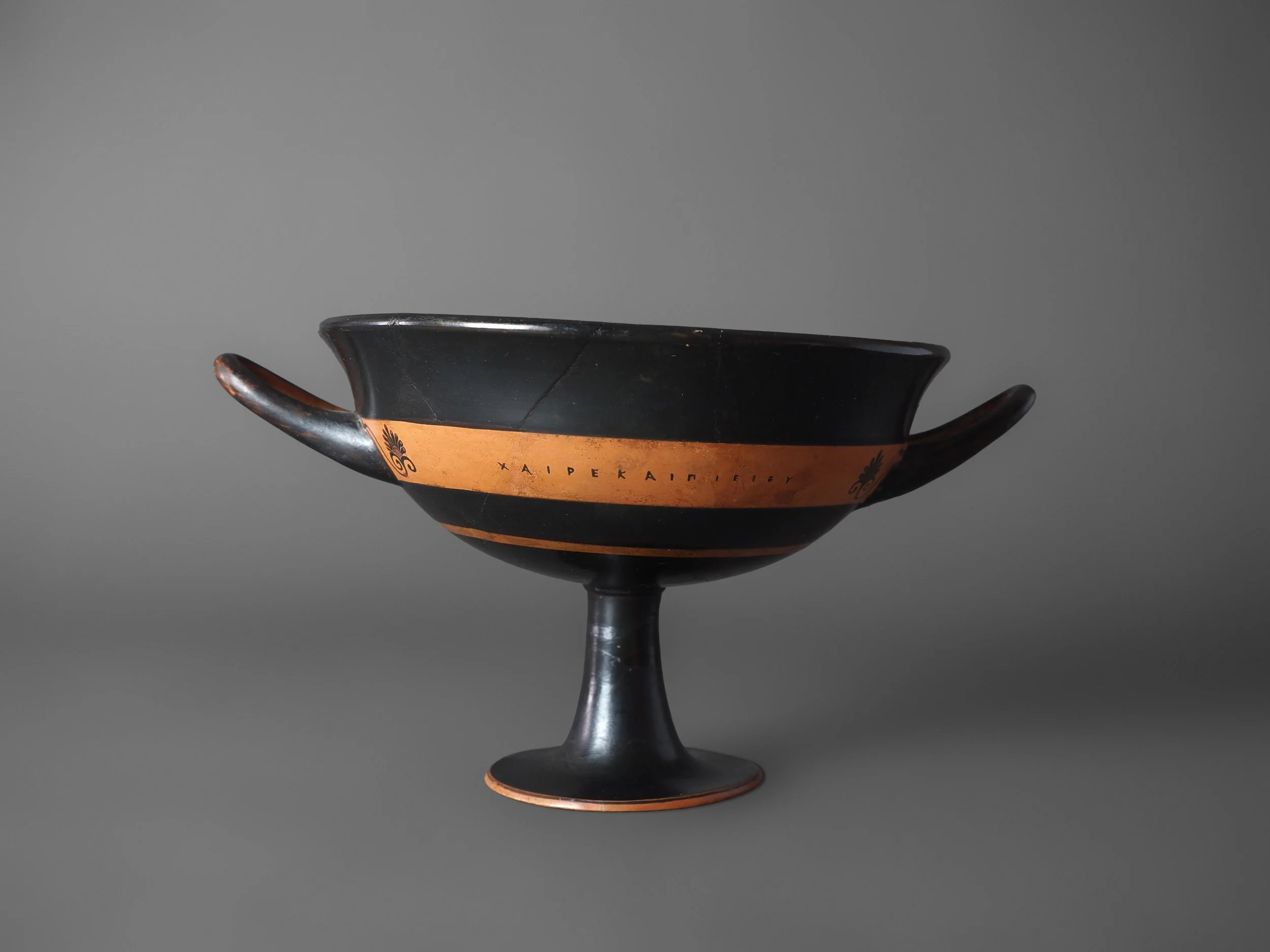
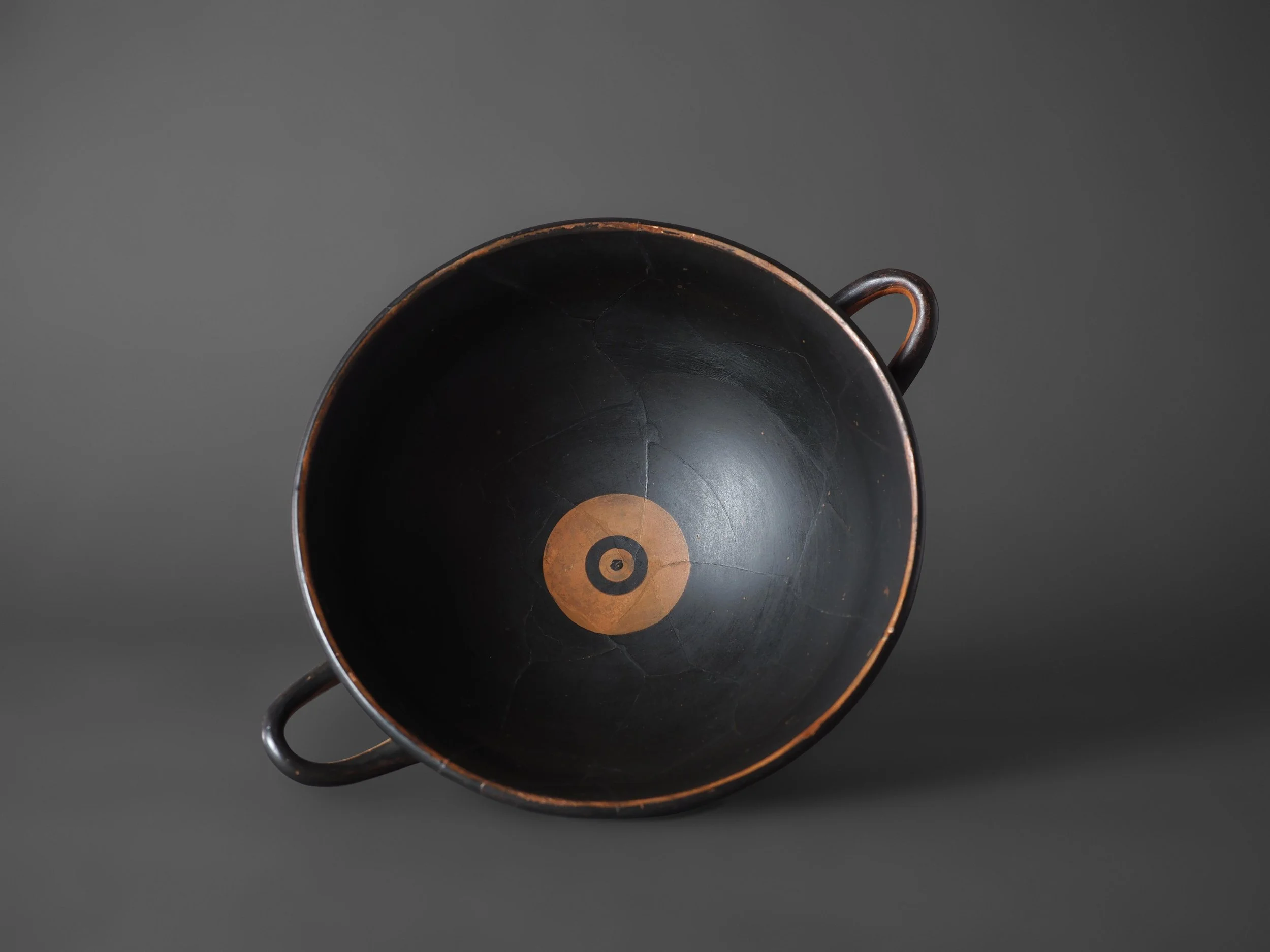
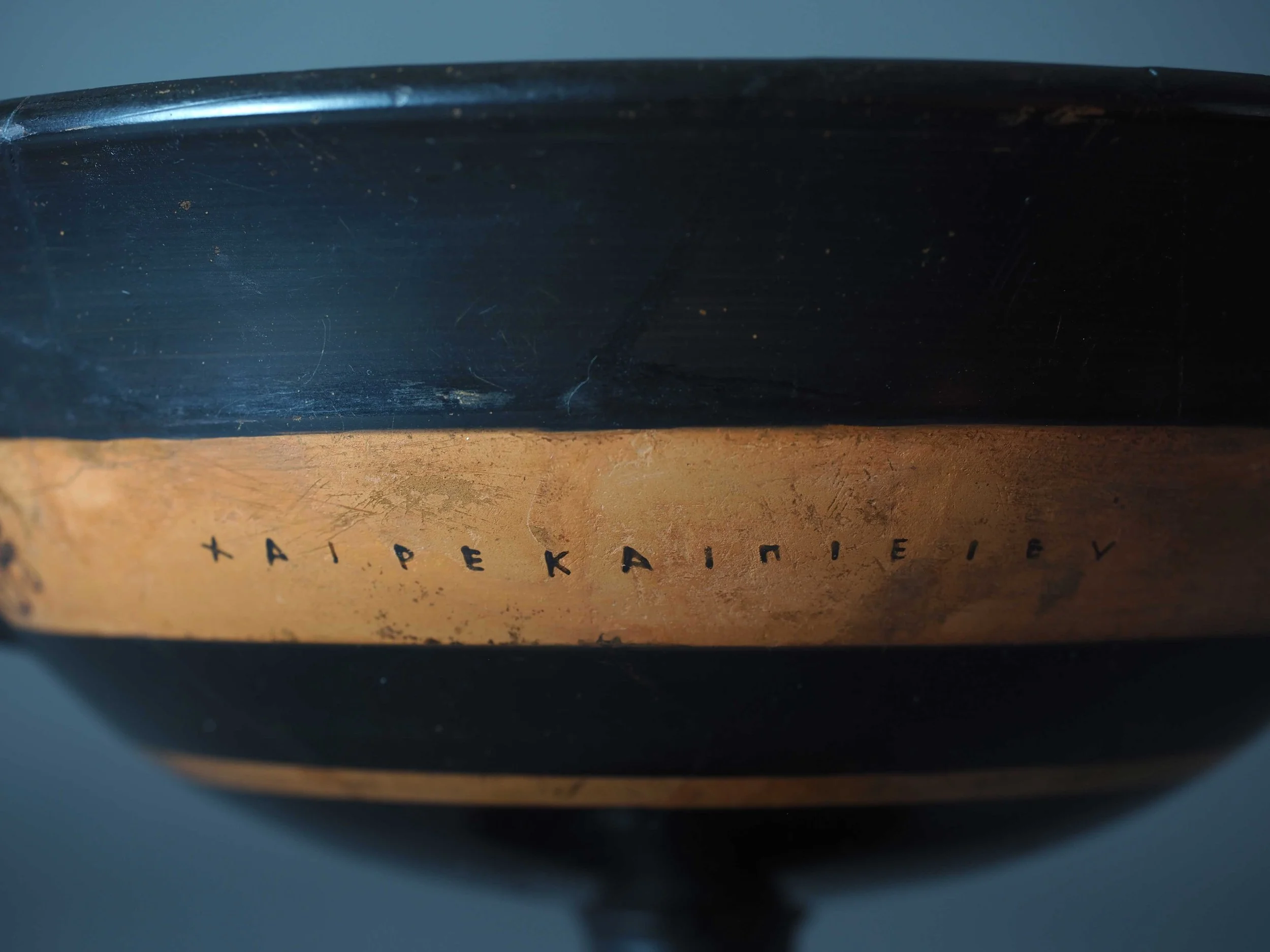
William Randolph Hearst (1863–1951) amassed one of the largest private art and antiquities collections in history – at its height, numbering around 200,000 objects. This was more than could be contained in any one of his residences, so he distributed the art among his estates. These included: Hearst Castle (San Simeon, California), Beverly House (Los Angeles, CA), Wyntoon (California), along with various in New York (such as 137 Riverside Drive, then at 91st Street, and later the Clarendon mansion on Riverside Drive. By the 1930s, Hearst stored many items at enormous warehouses in the Bronx, including entire rooms, ceilings, fireplaces, and crates of antiquities never installed anywhere. However, because of Hearst’s financial overreach in the late 1930s, and especially following the Great Depression, portions of his collection were gradually liquidated in a series of major auctions and private sales. Beginning in the early 1930s, Hearst began selling off art and antiquities quietly through dealers and private sales to relieve debts. In 1937 Hearst consigned a large group of antiquities, furniture, and art objects to the Metropolitan Museum of Art for disposal; many of these were auctioned through Anderson Galleries / Parke-Bernet, New York in 1937–38. Hearst’s financial crisis culminated in the late 1930s. Between 1939 and 1941, a series of highly publicised Parke-Bernet Galleries auctions in New York liquidated thousands of lots from his collection. These included European Old Master paintings, antiquities, sculpture, tapestries, furniture, and architectural elements (many of which had been warehoused for decades and never installed at San Simeon). In addition, smaller auctions and dealer dispersals continued after his death in 1951. His estate released further material, handled by Parke-Bernet in New York and other houses into the 1950s. It is not certain when this object left Hearst’s collection, however, his prior ownership is confirmed on the sales invoice (a copy of which is retained) from Donna Jacobs Gallery in Michigan, dated 5th August 1986.


